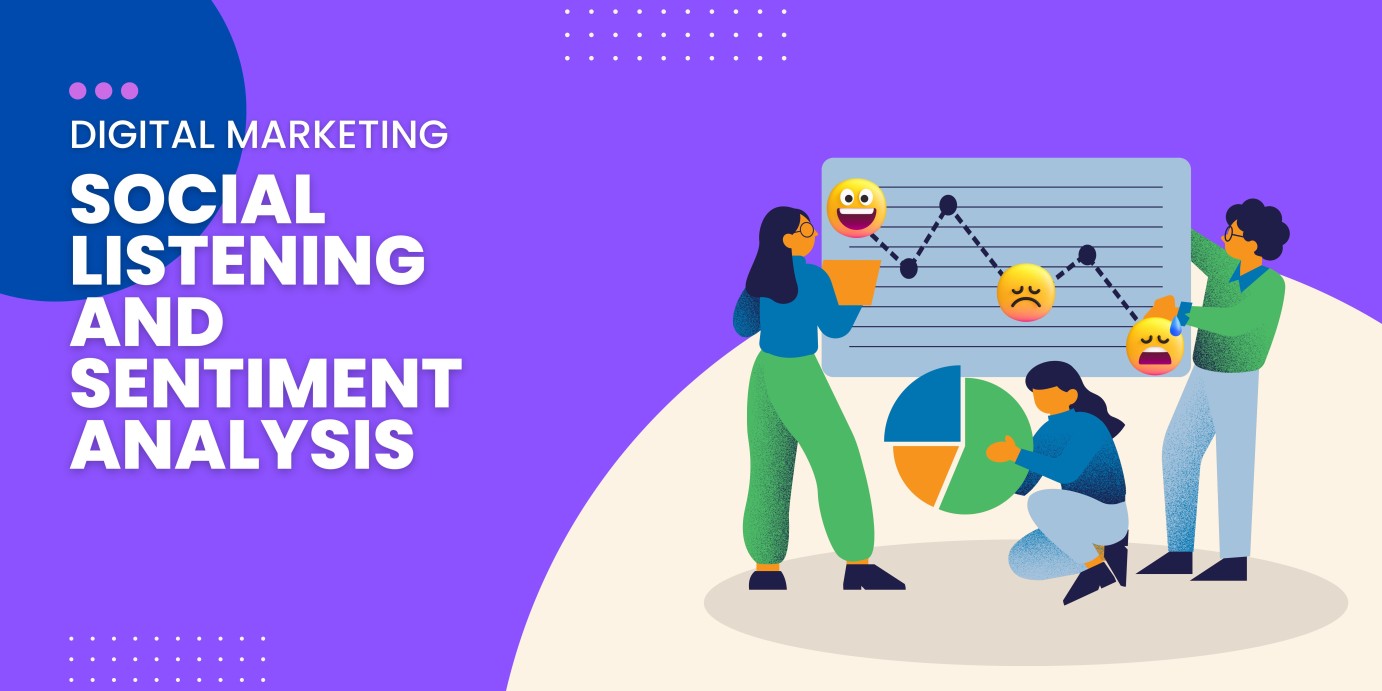Social media has become a powerful platform for communication, with millions of people expressing their opinions, sharing experiences, and discussing various topics. As a business, it's essential to tap into these conversations and gain valuable insights to understand customer sentiment and enhance your marketing strategies. This is where social listening and sentiment analysis come into play. Let's explore how these techniques can benefit your business:
1. What is Social Listening?
Social listening is the process of monitoring and analyzing online conversations happening on social media platforms. By tracking mentions, hashtags, and keywords related to your brand, products, or industry, you can gain real-time insights into what people are saying about your business and its offerings. Social listening helps you understand customer opinions, identify trends, and uncover opportunities or challenges that can inform your marketing strategies and business decisions.
2. Benefits of Social Listening
- Customer Insights: Social listening provides a direct window into the minds of your customers. By understanding their opinions, preferences, and pain points, you can better tailor your products, services, and marketing efforts to meet their needs.
- Brand Reputation Management: Monitoring social media conversations allows you to identify and address any negative sentiment or issues related to your brand. By promptly responding and resolving customer concerns, you can protect and improve your brand's reputation.
- Competitive Analysis: Social listening also enables you to monitor your competitors and industry trends. By tracking their activities and understanding customer reactions, you can gain a competitive advantage and identify opportunities for differentiation.
- Identifying Influencers and Advocates: Social listening helps you identify influential individuals and brand advocates who are discussing or endorsing your products or services. By engaging with them, you can build relationships, amplify your reach, and leverage their influence to drive positive word-of-mouth.
- Content Strategy and Campaign Optimization: Insights from social listening can inform your content strategy, ensuring that you create relevant and engaging content that resonates with your target audience. It can also help optimize your marketing campaigns by understanding what content and messaging elicit positive responses.
3. What is Sentiment Analysis?
Sentiment analysis, also known as opinion mining, is the process of extracting and analyzing the sentiment or emotions expressed in online conversations. It involves using natural language processing (NLP) and machine learning algorithms to determine whether the sentiment is positive, negative, or neutral. Sentiment analysis can be applied to social media posts, customer reviews, or any text data to understand the overall sentiment towards your brand, products, or specific topics.
4. Benefits of Sentiment Analysis
- Customer Sentiment Understanding: Sentiment analysis provides insights into how customers feel about your brand, products, or campaigns. This understanding helps you gauge customer satisfaction, identify areas for improvement, and respond proactively to any negative sentiment.
- Brand Reputation Monitoring: By continuously monitoring sentiment, you can detect shifts in public opinion and take appropriate actions to manage and maintain your brand reputation.
- Product Feedback and Innovation: Sentiment analysis helps you gather feedback on specific products or features. By analyzing sentiment patterns, you can identify customer preferences and pain points, allowing you to make data-driven decisions for product enhancements or innovations.
- Market Research and Competitor Analysis: Sentiment analysis can provide valuable insights for market research and competitor analysis. By understanding customer sentiment towards your competitors or specific industry trends, you can identify opportunities and stay ahead of the competition.
- Customer Service and Support: Sentiment analysis can be used to monitor customer sentiment related to customer service interactions. By identifying any negative sentiment, you can address customer issues promptly and provide better support, enhancing customer satisfaction and loyalty.
5. Tools and Techniques for Social Listening and Sentiment Analysis
There are various tools and techniques available to assist you in social listening and sentiment analysis. Some popular ones include:
- Social Media Monitoring Tools: Tools like Hootsuite, Sprout Social, or Mention allow you to monitor social media conversations, track keywords, and analyze sentiment.
- Natural Language Processing (NLP): NLP techniques, such as text classification algorithms and sentiment lexicons, can help automate sentiment analysis on a large scale.
- Machine Learning: Machine learning algorithms can be trained on labeled data to classify sentiment accurately and improve the accuracy of sentiment analysis.
- Sentiment Analysis APIs: APIs like Google Cloud Natural Language API or IBM Watson Natural Language Understanding provide pre-trained models for sentiment analysis, making it easier to implement sentiment analysis in your applications.
Conclusion
Social listening and sentiment analysis are invaluable tools for understanding customer sentiment, gathering insights, and enhancing your marketing strategies. By actively monitoring social media conversations, analyzing sentiment, and leveraging the available tools and techniques, you can make data-driven decisions, improve customer satisfaction, manage your brand reputation, and stay ahead of your competition. Incorporate social listening and sentiment analysis into your business practices and unlock the power of customer insights from the vast world of social media.

